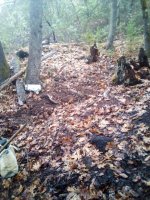Rico Swazi
Active member
Hey Rico, great to hear from you!
I’ve done quite a few experiments into laze fare gardening, with minimal inputs and in-fact last year I didn’t amend my beds with anything in an attempt to limit nitrogen and therefore starve the leaf spot disease of nutrients and bolster cell walls with slower growth; resistant plants still did very well but l could check that off my list of theories.
As for atmospheric pollutants, l know there’s many monitoring stations across the globe but I’m not sure if there’s a list available that cites the recorded material or the actual fall out.
It’s a very interesting study and one of the earliest documented reports of pollution, that l know of, was in late 1700’s London by a Count Rumford who pondered, that the black soot over everything was unburnt coal and from memory, came up with a mathematical model for tonnage. This in turn led him to redesign fireplaces, for more efficient burning and become one of the founding fathers of thermodynamics.
As for the phosphoric acid being available to the roots of plants, l keep getting stonewalled by the acid having to change form before uptake. It seems it has to be ionised from H3PO4 to a plant available H2PO4 or HPO4.
Anyone got any thoughts or links??
I hope Christmas is shaping up to be a good one for everyone,
Cheers,
40.
Hey 40, good to see you too brother
laze fare ? I do believe you have that turned around. Mixing potions and concoctions ferments and the like, into some sort of brawdo juice to make your plant grow seems the easy way (laze fare) compared to building healthy soil biology, tilth and structure. Only way I know how to do that is by accumulating clean biomass and either using it as mulch or composting. Low input doesn't mean starving your plants, it means avoiding over application of nutrients and or PGRs and non interference regarding the biological processes in play.
For me, a good part of being a good steward of the land requires observation into how nature wants to play the game in ones own particular microclimate and soil condition.
Most important - is the humility to accept the simple truth, WE do not always know what is best... often creating problems where there were none in our garden. Been there done that and the older wiser me says 'Best to let nature take the lead' and be there when services required.
Three of us share a clandestine grow that did extremely well without blood, bone, biochar, chicken pellets, Great White or the like. Handful of gypsum and heavy mulch is all we did to achieve this-
People round where I live are starting to take notice of healthy plants with less pest and pathogen problems and the resulting harvest . Proof in the pudding damn straight less is more
Last edited:




